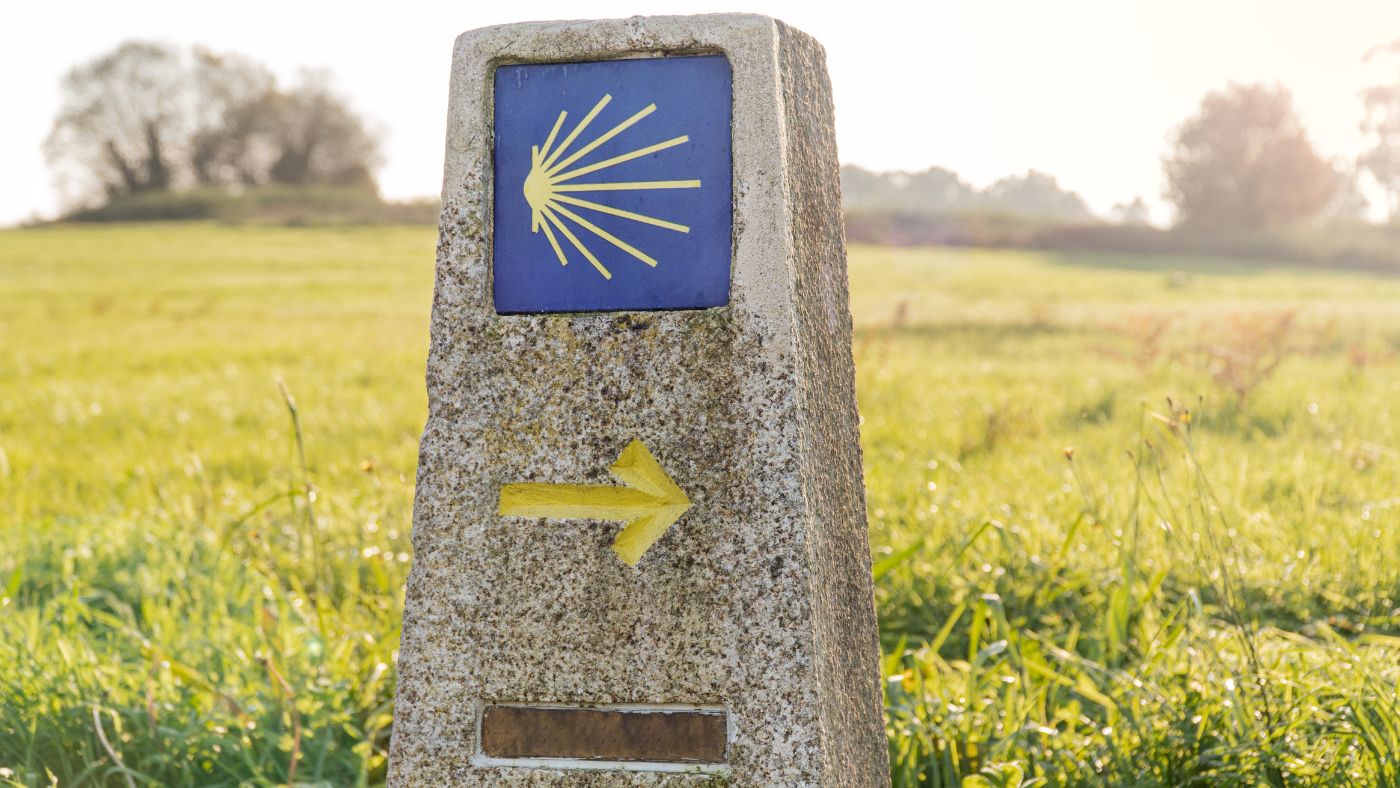If you’re new to ExperiencePlus! you may not know that Cycling the Camino de Santiago is one of our longest-standing tours. We celebrated the 544-mile journey throughout 2022, which marked our 50th anniversary. The tour is unique among our offerings because it follows a centuries-old pilgrimage route across northern Spain. Our bicycle route follows the paved portions of the ‘Camino’ from Roncesvalles to Santiago de Compostela where most pilgrims, or ‘peregrinos,’ arrive after six weeks or more of walking. Our trek comes in considerably shorter at 15 days (or even eight if you begin in León).
Bicycling the Camino de Santiago is beautiful way to experience the mystique and traditions of the pilgrimage while experiencing a part of Spain that is far less known than the country’s more popular exports of flamenco, bull fighting, Don Quixote, Penelope Cruz, and the Costa del Sol. The tour’s length and difficulty rating of a Level 3.5 attract cyclists who love to ride, enjoy the occasional challenge, and are willing to put time into training. Several participants label the tour “challenging, but worth it,” especially as you pedal into Santiago de Compostela on the tour’s last full day of riding.
Great riding aside, there are many compelling experiences you can have on this tour. And, you don’t need to be religious to appreciate the expanse of history that is one of the Camino’s great hallmarks. You just need to enjoy a good story. Here are five experiences that standout to us in 2023.

Cultural diversity
Four languages are spoken in Spain: Castilian Spanish, Galician, Basque and Catalan. You’ll hear and see the spelling of three – all but Catalan – as you ride through the autonomous regions of Navarra, La Rioja, Castilla y Leon, and Galicia. During the nearly 35-year dictatorship of General Francisco Franco (1939-1975) Spaniards were only allowed to speak, read and learn Spanish. Not until after Franco’s death did the cultures and languages of these autonomous regions start to re-emerge. And, you can’t forget the French, German, Japanese, Turkish, Italian, Portuguese,Chinese, and various other languages spoken by pilgrims along the way.
Economic impact
During Franco’s regime, the Camino de Santiago experienced a period of decline and neglect. Franco’s government saw the pilgrimage as a relic of the past and discouraged its practice, which led to a significant decrease in the number of pilgrims who traveled the route. Although the Camino bounced back after Franco’s death, and saw a resurgence beginning in the early 2000s, the 2020 pandemic had another significant impact on the local economies that depend on tourism related to the Camino de Santiago. Many hotels, restaurants, and shops struggled to stay in business due to the decrease in visitors. Your participation in the Camino is a financial lifeline to hundreds of Spaniards.
New habits
You will find yourself greeting every pilgrim – and perhaps every stranger you meet – with “Buen Camino.” You will look everywhere for the blue and gold clamshell and sometimes need to remind yourself that you follow white chalk arrows instead. You will look in every bar for tapas and occasionally make them your dinner. You will become obsessed with getting your passport stamped. Your eye for architecture will develop, perhaps even allowing you to recognize the differences between Romanesque, Gothic and Baroque churches. You’ll wonder why the restaurant seems empty when you sit down for dinner at 7 or 7:30.

Reflection
You don’t have to be be religious to appreciate the intent of a pilgrimage. Consider Graceland, your local Krispy Kreme (or other favorite guilty pleasure donut shop), or Washington, D.C. Sometimes places or things call to us and for whatever reason we go. The Camino is no different. Your time bicycling across the plains of Castilla y Leon will go by in the blink of an eye compared to your fellow pilgrims on foot. What’s it all about, this pilgrimage? The answer is different for all of us and some of us might spend more time thinking about it than others. Contemplation and reflection, especially as you become part of something greater than yourself, a feeling most of us get while on the Camino, can comfort the soul no matter your faith or lack thereof.
Storytelling
Cycling the Camino de Santiago exists because of a story that became a legend involving the discovered remains of the disciple Santiago (or in English, Saint James). After the crucifixion of Jesus, Santiago traveled to Spain to preach the gospel. He eventually returned to Jerusalem, but was martyred for his faith. His followers brought his body back to Spain, and buried it in a secret location. In the 9th century, a hermit had a vision of a bright star shining over a field in what is now Santiago de Compostela (in Latin, “Campus Stellae” means “field of stars”). He got to digging and the rest, as they say, is history. Every origin story we ever tell is a truth-seeking mission that may or may not be true. But it is always worth learning about it in person if you can.
Join us on the August 18, 2023, departure of Cycling the Camino de Santiago. Tell your own story of why you choose to ride the Camino, or keep it to yourself. Either way, the experience that unfolds will be unlike any other you’ve ever had.
You can also travel with ExperiencePlus! to Santiago de Compostela from Coimbra or Porto, Portugal, along the Portuguese Camino, which, although not as well-known as the Camino “Frances” across northern Spain, shares a similar mystique and also offers excellent riding.


